2024
First-Round Finalists Announcement
(Wear Category)
-
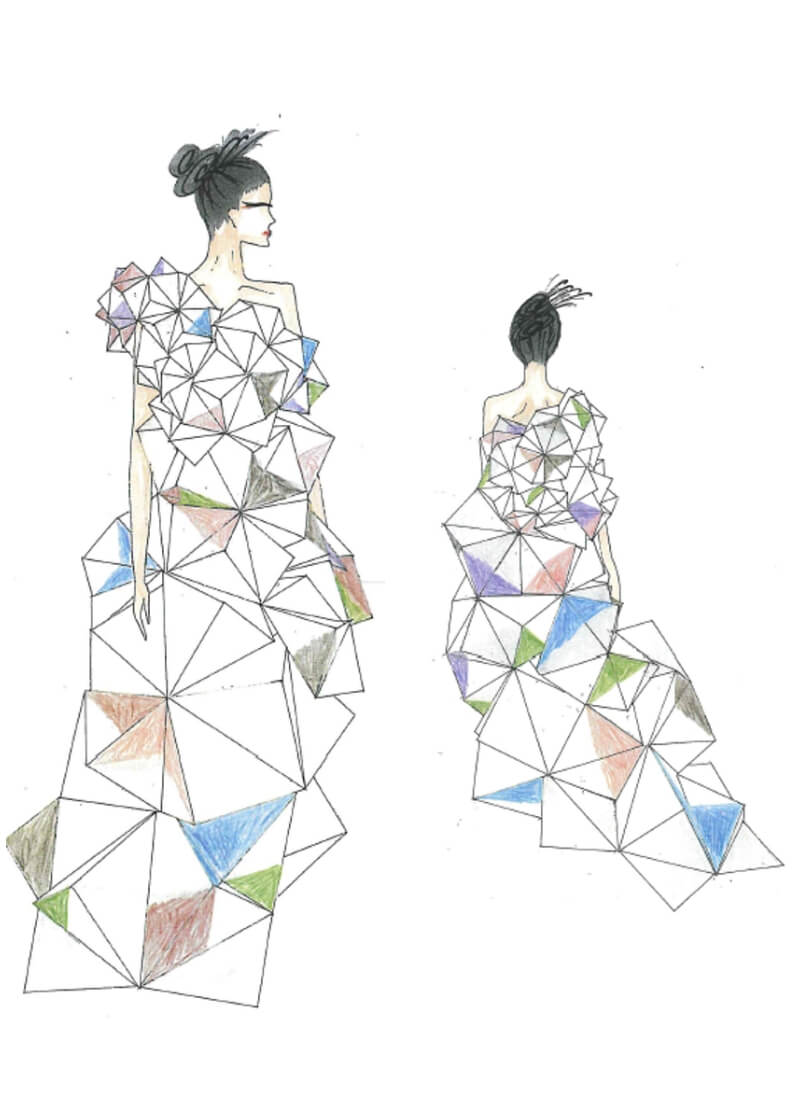
Professional Institute of International Fashion
井芹 杏里紗
Work name:Surface
Concept
A dress constructed with the beauty of "kimono" and "origami," the symbols of Japanese tradition.
Following the Japanese spirit of "mottainai" (a sense of regret over waste), the dress maximizes the use of fabric scraps generated when tailoring kimonos.
The title "Surface" represents the shape of the dress, assembled from multiple facets.Features
- The dress is assembled using an origami-like technique.
- Three parts form one triangle, which is then assembled three-dimensionally.
- The kimono parts use fabric scraps generated during tailoring.
-

General Entry
神川 裕貴
Work name:Hare to Ke
Concept
Our lives continue amidst the transition between "hare" (special occasions) and "ke" (everyday life).
This piece includes a prayer for the "hare" expressed by kimono to continue into the future.
"Hare" is expressed with the vibrant patterns of kimono, while "ke" is portrayed using fabric dyed in a life-filled red color.Features
- The kimono is disassembled and used in mostly rectangular pieces to maximize their effectiveness.
- Combining triangular flares between kimono pieces transforms the garment into something entirely different.
-

Tokyo Metropolitan Joto Vocational Ability Development Center
菊入 友里杏
Work name:Shoka
Concept
A dress where traditions dance.
Creating a new style through the fusion of traditional Japanese elements with the elegant silhouette of Western gowns.Features
- The hanging ribbon part of the crinoline uses obi fabric.
- I aimed for a design where historical and modern elegance harmonize through the delicate patterns of traditional Japanese elements and the three-dimensionality of the crinoline.
-
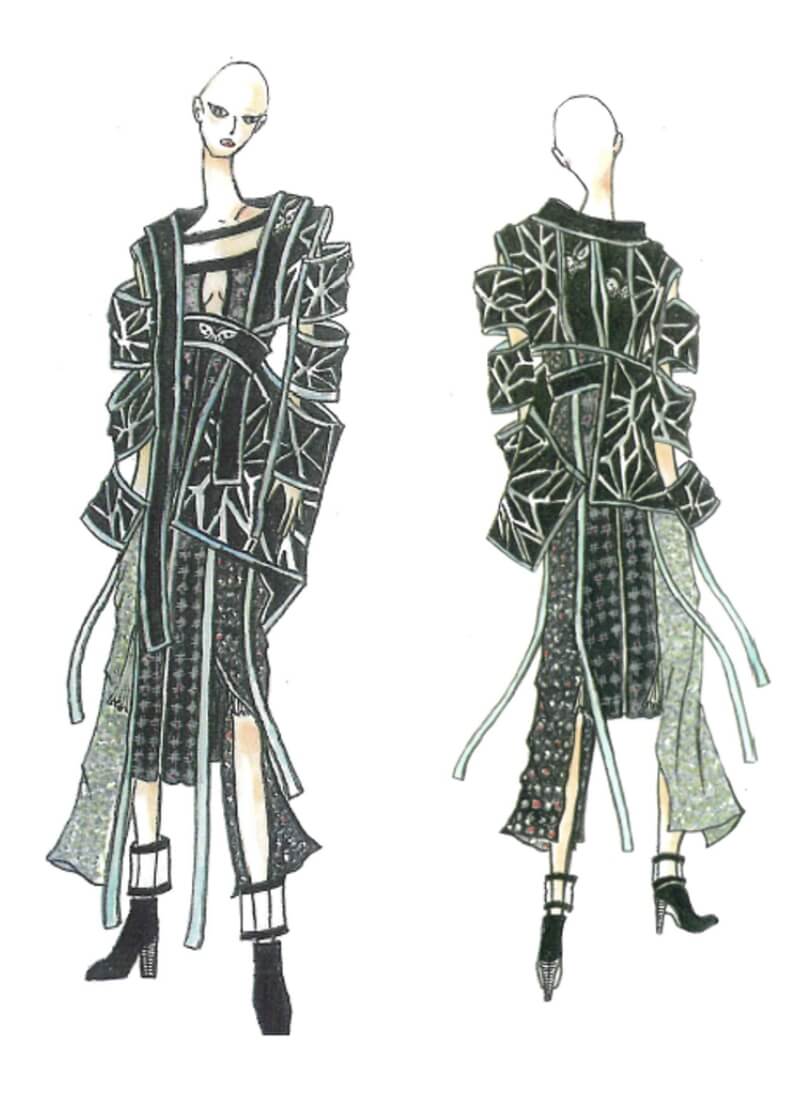
General Entry
倉持 三千世
Work name:Straight Lines
Concept
When deconstructing and remaking vintage kimonos, I aimed to preserve the original fabric width and utilize straight lines, considering the potential for others to remake them again.
Reflectors integrated in several places add modern and street elements.Features
- The jacket features zippers, snaps, and hooks & eyes, allowing you to change the silhouettes.
- The dress makes use of the straight lines through pleating and other techniques to control the volume and add movement, using fabrics from deconstructed kimonos while preserving their original width.
- The design maintains the essence of Japanese tradition while being avant-garde and on par with high-end fashion overseas.
-

Tokyo Mode Gakuen
五賀 駿也
Work name:Tuna-wear
Concept
Inspired by traditional tatami mats, with the theme of connecting past to future from a sustainability perspective.
It communicates the importance of individuality with respect to this theme.Features
- Observing the pattern of tatami mats, I replaced them with new irregular shapes to create individuality and integrated them into real-world clothing.
- Utilizing the patterns of each kimono fabric and combining them with modern techniques, the design bridges traditions from the past and creates new forms.
-

Rikkyo University Graduate School
鈴木 祐太
Work name:Wind Flower Transformation
Concept
Proposing an extraordinary and avant-garde fashion that boldly reinterprets past traditions and consciously avoids blending into modern lifestyles.
Collaborating with the art project "Kimono Reproducts" launched by the creative team "Tohikou," the design utilizes kimonos from the grandmothers' generation as materials, reconstructing their beauty and historical value from a new perspective to challenge contemporary sensibilities.Features
- Emphasizes a silhouette that highlights volume, freeing itself from the constraints of conventional fashion that follows the body's shape.
- Uses vivid and diverse colors to reconstruct the traditional kimono patterns and hues with a modern sensibility.
- The layered fabrics create a three-dimensional design, offering the feel of a sculptural art piece, allowing the wearer to become part of the art.
-
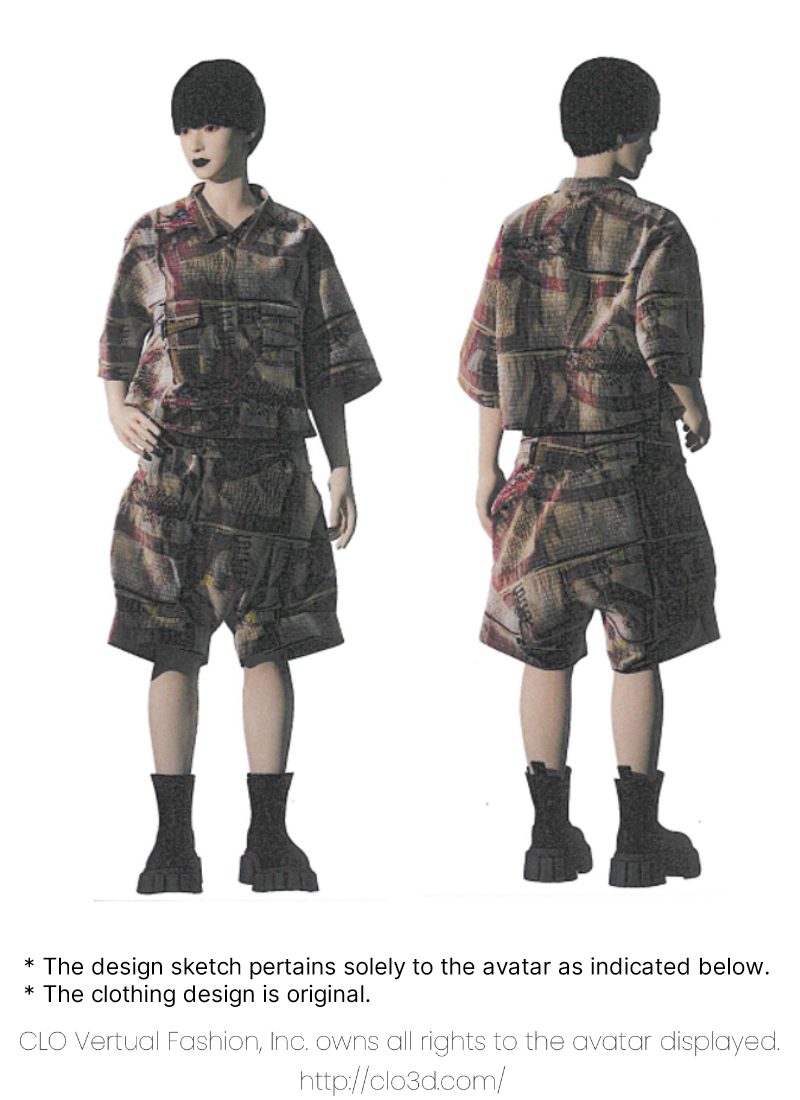
General Entry
炭屋 有希子
Work name:Rags
Concept
Construction and stitching.
Features
- The design makes use of damaged obi fabric, which is considered worthless in the market.
- A casual wear that gives a kimono-like vibe, with its looseness and occasional rectangles.
- It infuses life into the fabric, allowing it to coexist with the damage, by incorporating various types of embroidery, such as sashiko, darning, patching, and machine embroidery.
-
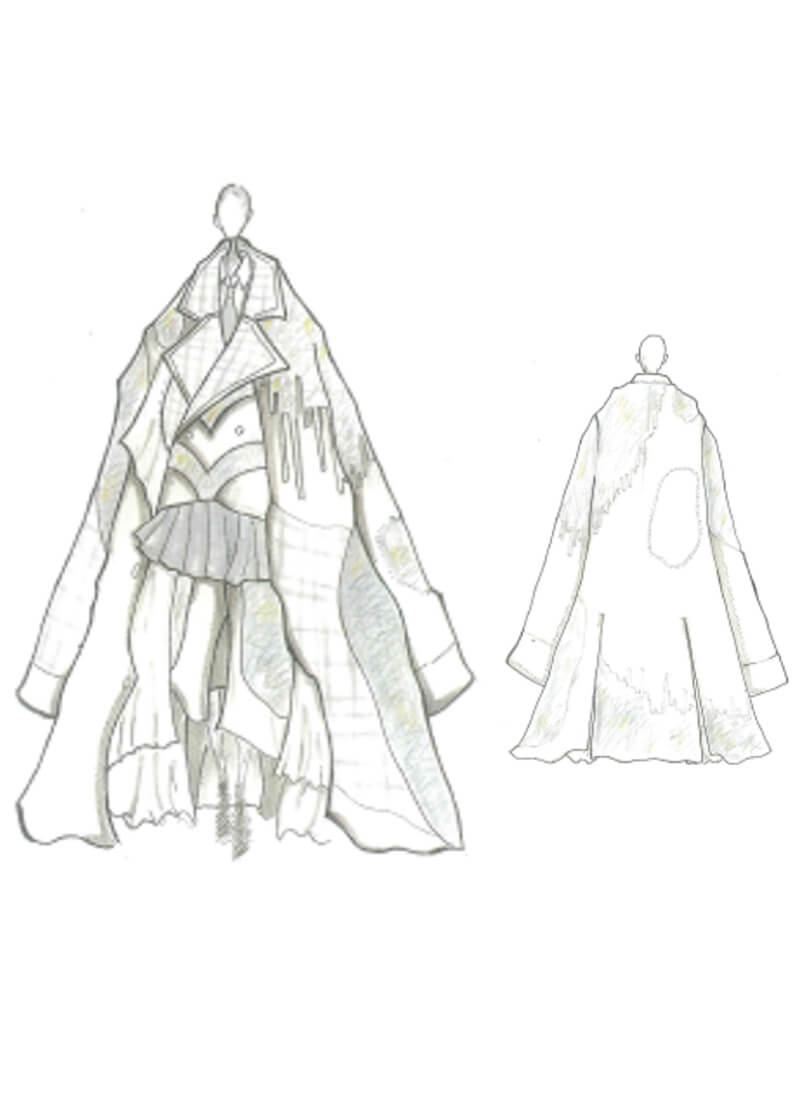
Bunka Fashion College
中村 虹輝
Work name:Circulating Clothes
Concept
Clothes that consider the future of sustainability.
Features
- The fabric is created by breaking down unwanted clothes, kimonos, and fabrics into fibers and then combining them to form new textiles.
- The things we produce will one day no longer be worn. By turning them into fibers, we can create a cycle of sustainability.
-

Bunka Fashion College
西﨑 有那
Work name:Ever-Changing Tokyo
Concept
Designed with the concept of Tokyo's ever-changing cityscape.
Inspired by the excitement and tension felt in the rapidly changing everyday life, targeting individuals who continue to take on challenges day by day.Features
- The waist part uses various kimono fabric scraps woven together to create an original textile, expressing the awareness of sustainability.
- Raising the hem of the pants creates a distinctive design.
- Proposes a new style by combining a tailored suit with elements of kimono.
-
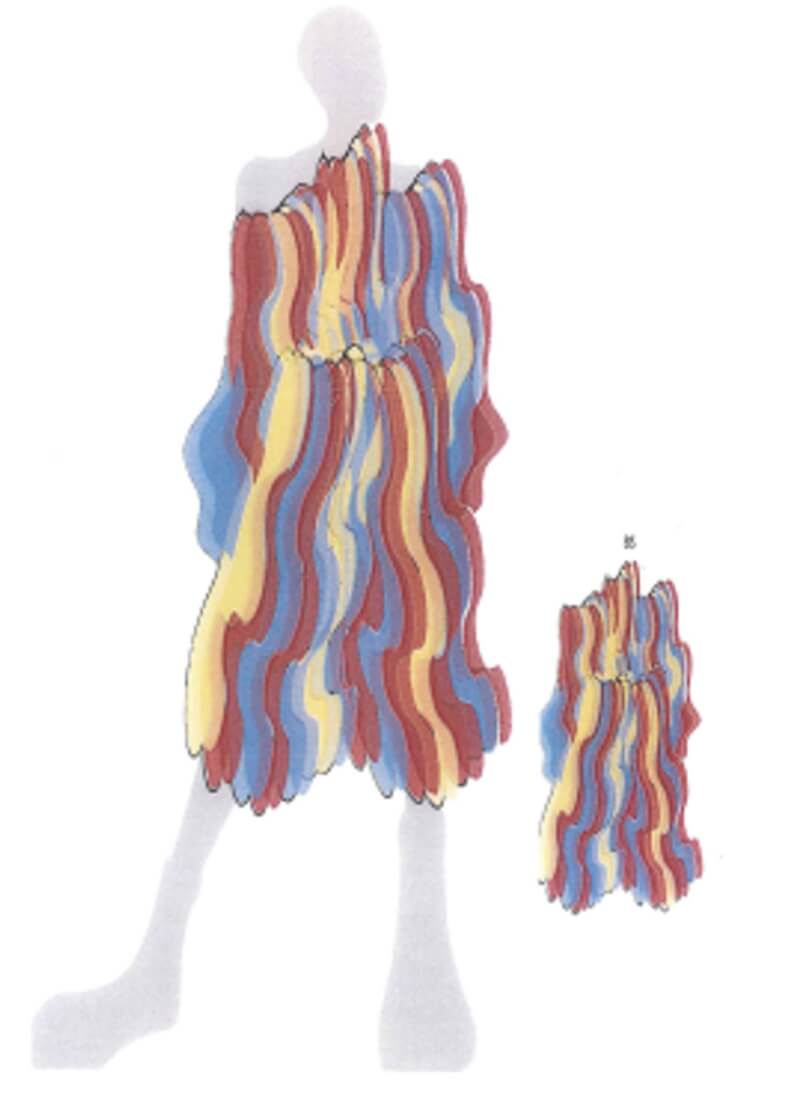
Tokyo Mode Gakuen
西吉 絢海
Work name:Kimono Wave
Concept
With the hope of bringing the kimono trend back, this design features waved silhouettes and details inspired by the theme of a kimono wave.
Designed to leverage the lightness of silk material.Features
- Waves are created by fastening and sewing cut kimono fabric vertically.
- The design creates movement when walking, as if the kimono is alive, enhancing its appeal.
-
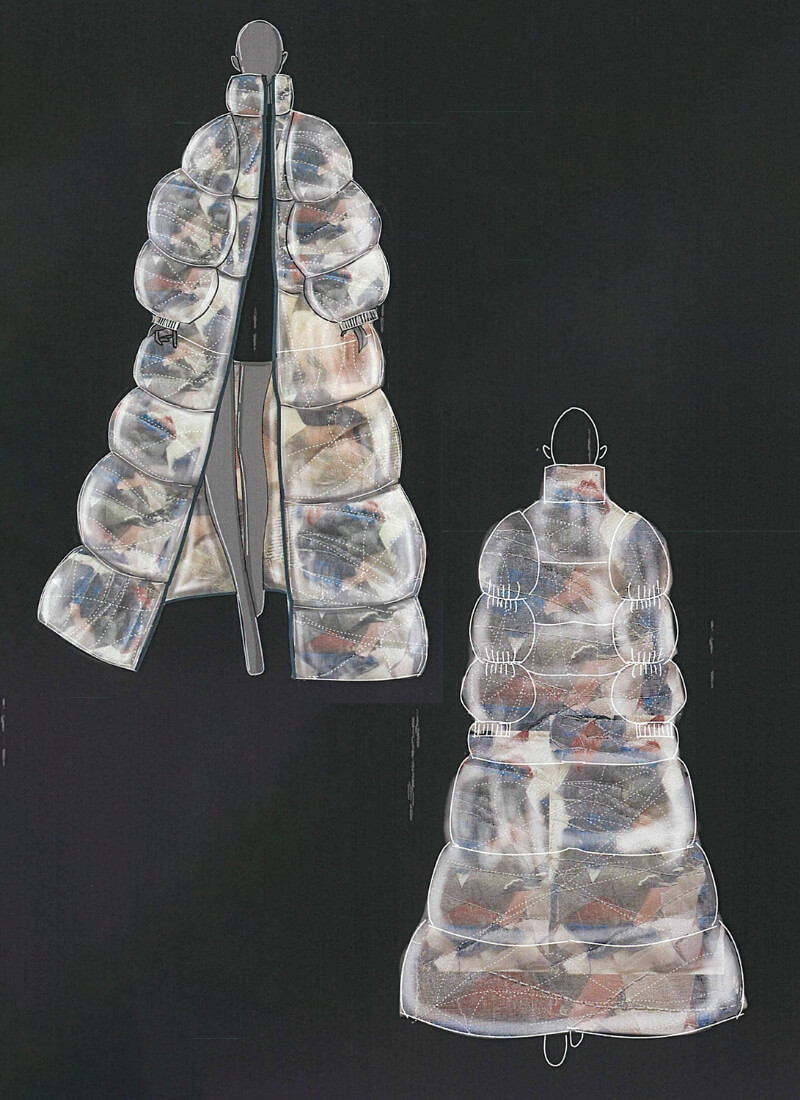
Professional Institute of International Fashion
野口 キララ
Work name:VIBRANT VEIL
Concept
Kimonos are usually made of one type of fabric, and you will almost never see a variety of fabrics within a single piece.
This design features a kimono-inspired quilted down coat that showcases an array of vibrant kimono fabrics within a single piece.Features
- The design of this original quilted coat with a retro-modern vibe uses various kimono fabrics inserting them randomly under sheer fabric, allowing the vibrancy of multiple kimono textiles to be perceived at once.
-
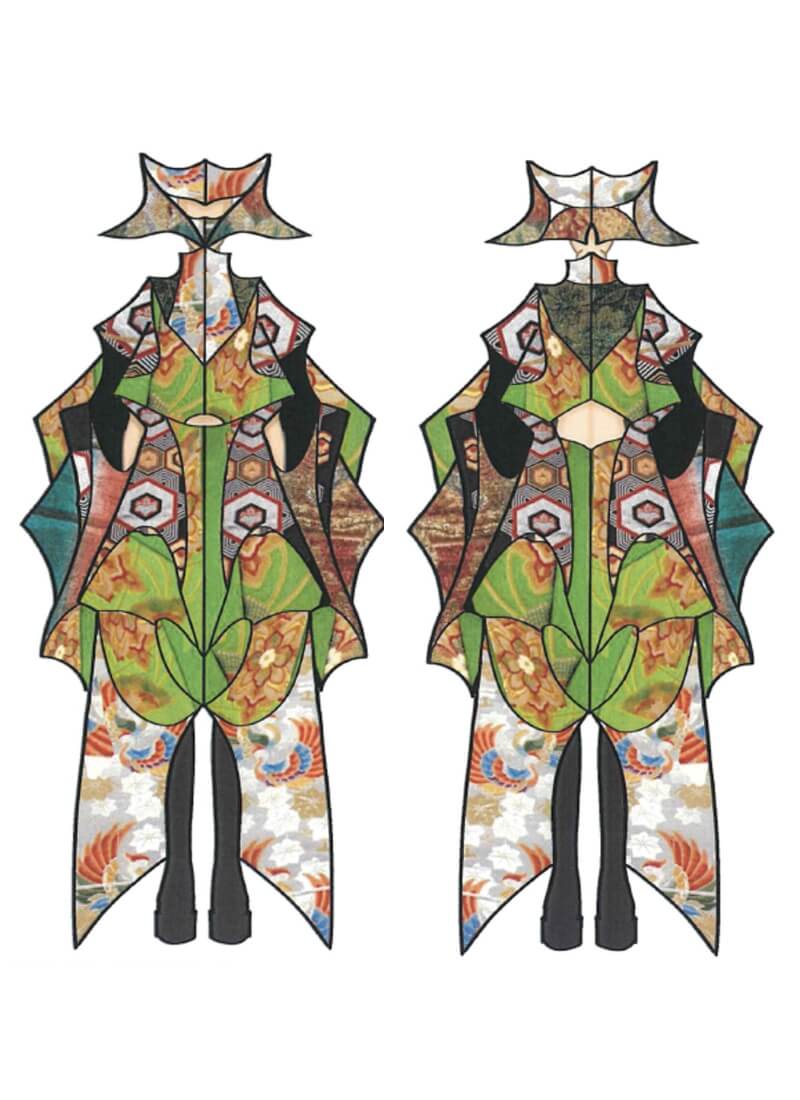
General Entry
花田 玲於
Work name:Collage
Concept
The theme is cutting, rearranging, and reconstructing fabric like a collage. By preserving the beauty of traditional Japanese fabrics and combining them with contemporary design, I hope to create an opportunity for people to see see Japanese clothing from a new perspective.
Features
- Reuses partially damaged Japanese fabrics that are no longer used by cutting them out and repurposing them.
- The patchwork pieces are cut, carefully considering both the design of the individual damaged part and the overall image, thus reducing fabric waste during production.
- The design is size-free, allowing it to be worn regardless of body type or height, so it won't be disposed of due to size issues.
-
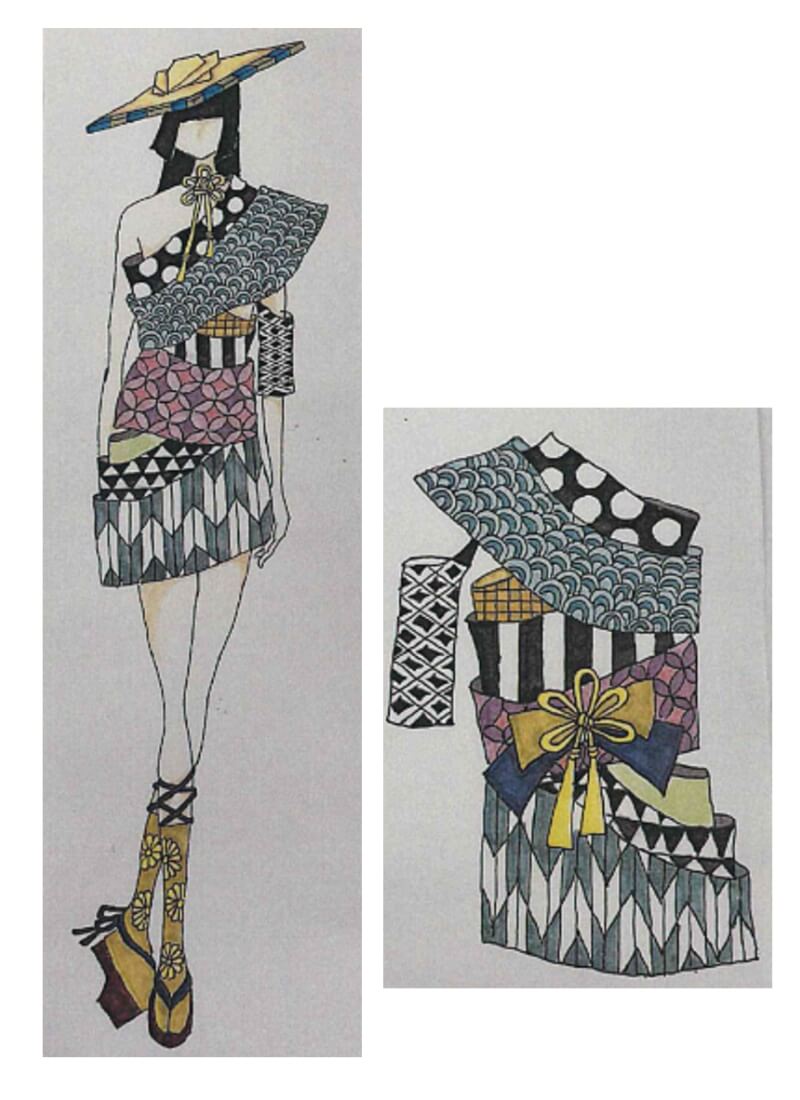
Kana Fashion Colledge
原田 かむい
Work name:OBI
Concept
The concept of blending "Traditional × Modern" is reflected in the patterns and colors of this design, with layers of various obi wrapping around the body, inspired by the "Juni-hitoe" (a traditional Japanese multi-layered kimono).
The overarching theme is "wa" (the essence of the Japanese culture).Features
- The design layers traditional vibrant patterns with monochrome simple patterns to express the contrast between traditional and modern.
- The headpiece is made with igusa (rush grass), inspired by tatami. Ribbons inspired by mizuhiki knots are attached at the neckline and the back of the waist.
-
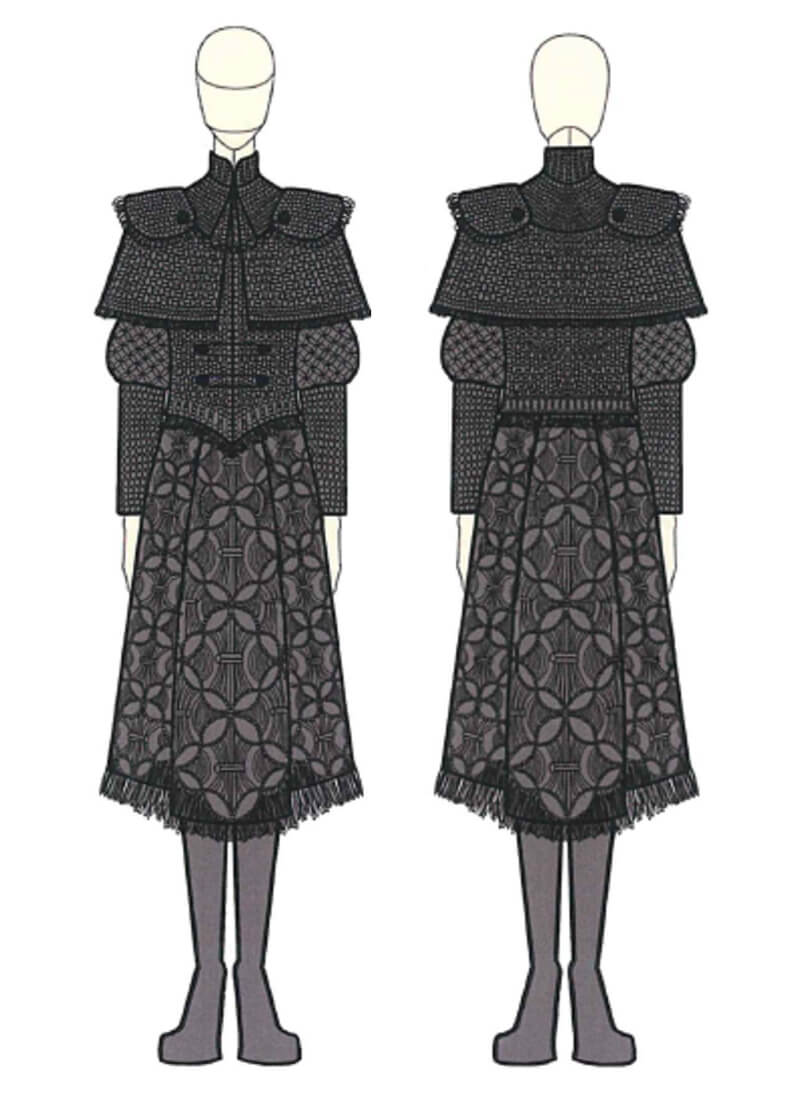
Tokyo Mode Gakuen
三浦 彩
Work name:Armor
Concept
Armor-inspired design, crafted using macramé knitting.
Features
- I imagined clothing as something that reinforces oneself, like armor.
- The cords symbolize human relationships, and the macramé knitting expresses the complex anxieties and expectations of people living in Tokyo's society.
- Creating cords from fabric through straight cuts reduces fabric waste, and the knots can conceal stains or blemishes on the kimono.
-
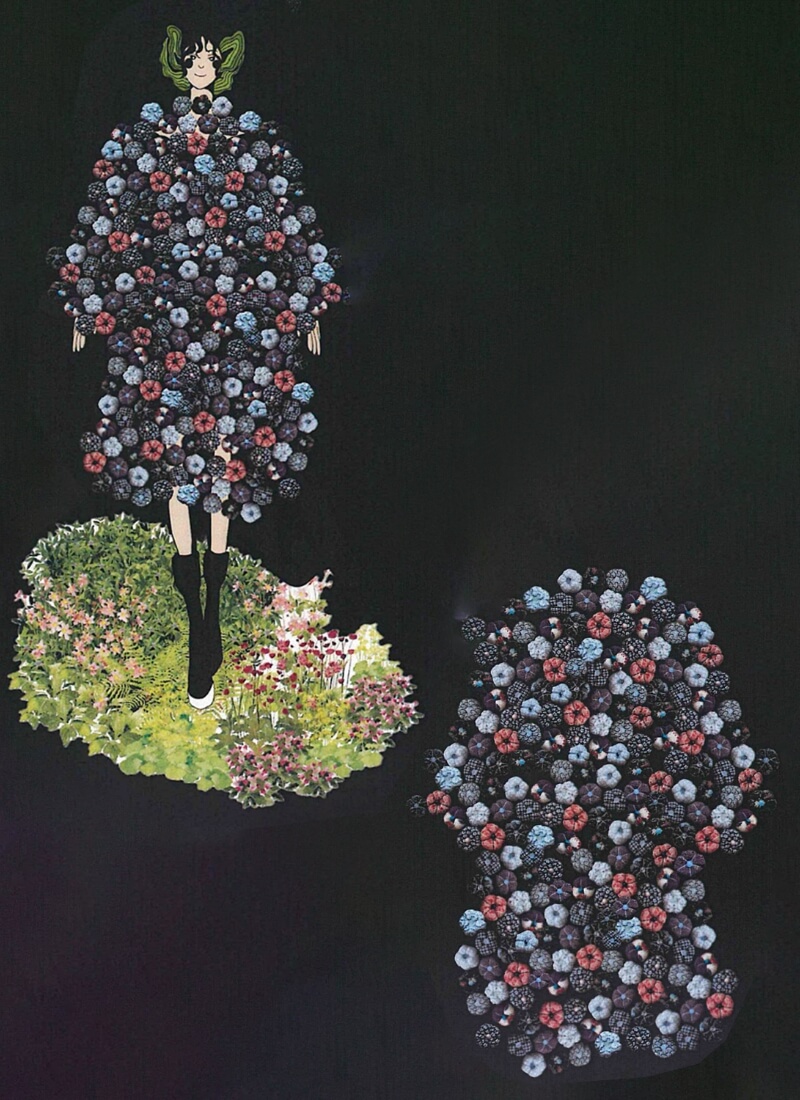
Professional Institute of International Fashion
山田 萌永
Work name:Flower Temari Balls
Concept
"Chirimen Craftsmanship × Modern Fashion"
While the chirimen craft is not typically used in clothing, this design is meant for young people to wear so that they could inherit traditional Japanese patterns and techniques.Features
- The original patchwork apparel is made with flower temari balls.
- Easy to put on and take off, even for those with disabilities.
- Handmade flower temari balls are created from Nikkoshi chirimen fabric scraps.
First-Round Finalists Announcement

